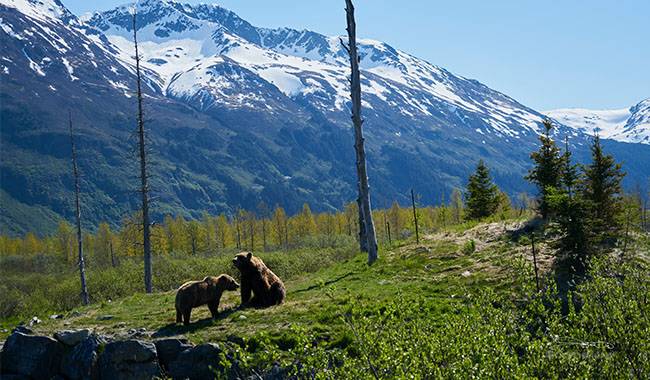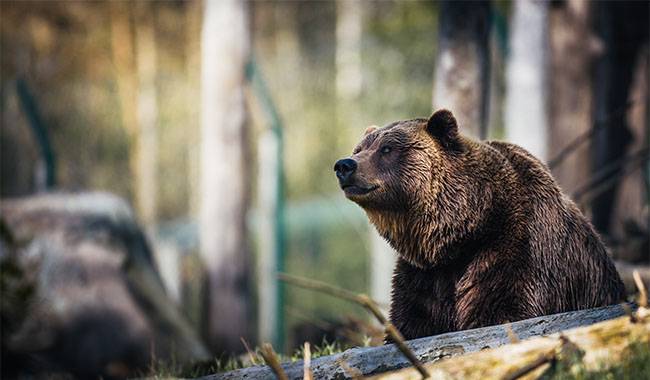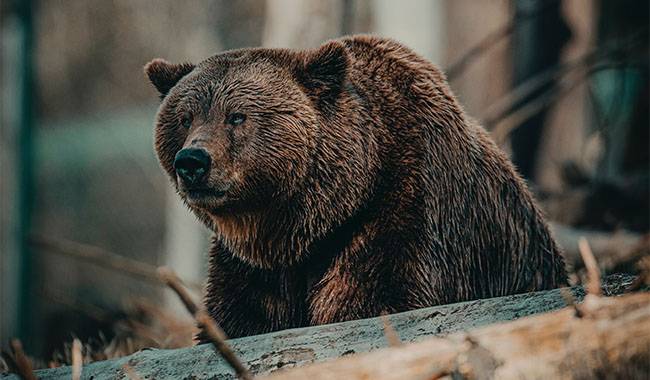
In the You will learn more about How to Scare a Bear Away on Camping Trip by LCNOutdoors article, we will only discuss tips for solo travelers or small groups. Why? Because the bear is trying to avoid a large group of people and is just desperate to attack them out of extreme hunger and/or anger. But in this case, alas, the techniques described here will no longer be helpful.
Hint: “I’ll quote a familiar mountain guide who wouldn’t leave a ski resort without a buzzer and a shovel: “If there’s a mountain with snow on it, there’s bound to be an avalanche.” The same is true of bears, where it’s enough to leave the metropolis without even the surrounding forest. Once, I happened to spend the night in a man’s tent in the mountains in late spring. But a few days into the valley, local hunters say the chances of avoiding an encounter with a freshly awakened and very hungry animal are slim to none. And vice versa, less than a kilometer from Teriberka, trodden by hordes of tourists, right next to a busy road, who “luckily” led a group of visitors directly to a mother bear with cubs.”
What Are The Chances of Encountering a Bear?
All popular areas for outdoor activities in the U.S. include bear habitat: south to Mexico, north to Alaska, including most of the eastern, west coast, Rocky Mountains, and the southwest U.S.; common throughout Canada, etc. It’s best not to count the chances of meeting them, but simply to be prepared for it.
How to Avoid Accidental Bear Encounters

Our main task is to avoid direct contact with bears. Unexpected meetings, and those where both parties have difficulty retreating, are especially dangerous. To prevent this from happening, you need to “warn” the bear of your appearance. It is best to make loud, unusual noises for the area on a regular basis, preferably high pitched. It doesn’t matter what. The advice to speak loudly does not work well in practice: it is difficult to keep talking loudly, especially for a few days. Especially when traveling alone.
Yes, we’re not here to chat in the woods.
Don’t forget to warn your partner walking in front of it before you’re ready to scare the bear away loudly. They’ll be very grateful. So, what is the best way to “warn” your presence: Trumpet or horn.
Trumpet or horn
This may seem like an odd choice, but plastic fan pipes are perfect for scaring off bears. The sound is loud, shrill, and unusual, and they weigh very little. Even the seemingly large horn weighs less than 100 grams, and it’s easy to hang it on a backpack. There are tricks to her growling and making herself want to immediately run away to hide under the Christmas tree to claim more, please do not approach.
Hint: “You’ll laugh, but I personally respect and often use the trumpet that fans used at the 2010 World Cup in South Africa. With some skill, she roared loudly. On the park, with its help, I managed to disperse hordes of bears that were sitting in stream beds, from the ridge to the beach. This surprised the local guides very much.”
Whistle
It’s perfect for hikers. It’s lightweight, it’s loud, it hangs around your neck or on your backpack straps, and you’ll always have it. By the way, on some packs, the whistle is built into the sternum strap buckle. It’s not too loud, but if you can’t do better than that, that’s fine. And your pack will factor its weight into the weight of the pack. If you want a really loud whistle that can be heard throughout the area, then instead of buying a small plastic whistle from a sporting goods store, get a full-fledged metal whistle, preferably one with a double chamber.
For example, the “LCN Stainless Steel Outdoor Survival Whistle” from a well-known Chinese marketplace produces a very loud and shrill sound that is literally on the edge of the pain threshold.
Devices and mechanisms for making annoying or loud sounds
Here, it all depends on the means at hand and your ingenuity. For example, you can mash a metal bowl or cup, a spoon, or a knife. The sound they produce is resounding and far-reaching. And for a permanent camp, a boat bell, a marketplace, is a good choice.
How to Scare Away Bears at Night
Whistling or ringing a bell a lot at night is strange, to say the least: we need to get some sleep and rest. The sense of smell comes to our rescue. Your camp should never smell tasty and interesting, but dangerous or at least incomprehensible. That’s why food should be kept in airtight containers that are impervious to the elements, and it’s a good idea to burn a few grams of gunpowder or any fireworks at night.
Smoke from a campfire can also deter bears, but only for those who regard its smell as dangerous and incomprehensible. Sometimes, however, visitors unconsciously “feed” the bears because they don’t clean up leftovers, which leads them to believe that popular campgrounds are tasty and easily accessible food sources. Smoke and fire will not scare away such bears.
Hint: “There’s a bit of a lyrical digression when it comes to scent. Don’t be afraid. Even humans, let alone wildlife, can smell fear very well. You are in charge, you are the king of nature, not the prey or food. Be confident and calm – it’s important, and the animal will sense this and give in.
How to Scare Away a Bear Encounter

You are not part of the bear’s regular diet because you are the last thing it considers; the main reason for an attack is sudden fright and defense of territory or offspring. Some rare exceptions are early spring when he is awake and the food is not yet grown, and the rather peculiar winter crane. So don’t worry, encounters are unlikely and certainly not aggressive, but you better be prepared. So, when you encounter a bear, how do you scare it away.
Flare
An archipelago item. Flamethrowers are the best in terms of effectiveness/effort/accessibility. Bright flames, sparks, loud crackles, nasty smells – everything bears really don’t like. Using the Flare only makes sense at medium, preferably short, distances, because it doesn’t make the right impression at a distance. The ideal combination is: waving a burning flare with your left hand and holding a special cylinder in your right hand, which we’ll talk about later.
Thanks to new regulations requiring all small boats to be equipped with flares, which are now easier to buy than ever before, it is definitely not worth ignoring this opportunity. Pay attention to the hull when buying: cardboard ones are still on sale, and they are definitely not what we need. Get a plastic one, approved by the FDA. Has a reasonable shelf life.
A few important tips for using Flare.
- Have a welded sealing film under the plastic cover of its body – after all, the Flare is made for shipwrights in distress. Under pressure, you are unlikely to remove it. So remove the cover beforehand, remove the film, and carefully place the ring and rope so that nothing gets tangled and falls out on its own. Check the knot of the rope as well. Carefully put the lid back on and the device is ready to use.
- The only way to carry a flare gun is if you can pull it out and start it immediately. For example, the author is right-handed and likes to carry the flare gun in a patch pocket on his left hip with the handle facing up.
The flare capsule is sealed with aluminum foil, and it’s best to remove it beforehand. It’s hard to peel it off under pressure. The author of this article is right-handed and puts the flare gun in his left hip pocket with the handle up. That way you can grab it as quickly as possible. And he has a gas can hanging from his belt to scare away animals.
Animal Repellent Gas Cylinder – Bear Spray
Recently, “anti-beast” gas cylinders, long known among Western hunters, have begun to appear in the United States as well. In English-speaking countries, they are called bear spray.
Hint: “I don’t know of any success with them in the U.S., but the extreme popularity of such cylinders among American tourists and Canadian rangers suggests that this is not a bad thing. And the latter have to deal not only with larger, more aggressive grizzly bears but also with packs of wolves.
These cylinders have an optimized gas mixture and a huge volume of up to 650 ml. They usually have an ergonomic grip and come with a carrying holster. Detailed instructions for use can be found on the package.
A few important tips on using gas cylinders to protect animals.
- Some cylinders have a check fuse. For example, on the “Anti-Beast” balloon. When buying, just straighten her tentacles a bit, because they are compressed from the factory and there is a risk of falling out of the check.
- Use a strong string tied to a large headpin, which can be easily grabbed without looking, even with your teeth, because your left hand may be occupied. The author has a fluorescent keychain kitten hanging from his cheek. With such a marker keychain, the balloon is easier to find in the tent when someone is out there blowing suspiciously.
- To carry, some gas cylinders have holsters, but not everyone will find them convenient. If you want maximum ergonomics, sew or order your own so that you can get to the balloon with one hand without looking. The Canadian Ranger mentioned above wore a cylinder on his chest specifically for unloading, but this is already purely professional equipment.
The known drawback of such cylinders is that they are difficult to transport on aircraft, as is the case with any gas. However, this can be solved by purchasing the cylinder locally, which needs to be specified in advance, or by having it delivered to its destination by a shipping company. Such cylinders can be rented in national parks in the United States and Canada.
Weapons
We believe that if you have enough skill to shoot an aggressive animal with a shotgun and you have the right to use it, then you already have enough experience that a significant portion of the advice given here is known or useless. As for the rest, here are some examples from the article author’s practice
Hint: “I do a lot of scouting, laying and marking ski trails, hiking trails, and riding routes in forests far from human habitation. But I almost never carry weapons with me because it’s so inconvenient to climb with them in meters of wind and just through dense forest that I think the “pipe/torch/gas” device described above is sufficient, if not redundant.”
In Greenland, when you rent a sea kayak for a solo trip through the fjords, it comes with a rusty old double barrel and you have to buy ammo cartridges for it at the nearest store – they’re usually somewhere between shampoo and potato chips. You won’t kill a polar bear with it, but it will quite literally chase away any active person interested in you, shooting hysterically in the air. And the Canadian Rangers have a large caliber pistol in their kit, as well as a tank that they train in its use on a regular basis.
Why is “Hunter’s Signal” not suitable as a bear repellent?
“Hunter’s signals” are portable signal transmitting devices. They are usually small metal tubes with a small slanted tube or flare screwed into them. The device has a spring and a firing pin with a punching gun. The firing pin strikes the primer in the cartridge, which causes the cartridge to fire. A small flare flies out of the cartridge with a popping sound.
As the name implies, they are used to signal when hunting or fishing. The “Hunter’s Signal” is inexpensive: $5 buys you a launcher and a set of ammunition. Using it, one can scare aggressive dogs. But one shot from the “Hunter’s Signal” hardly chases away a bear, and it takes too long to reload. One had to take out a new round, screw it into the tube, snap and release the firing pin. And all of this happened in a highly stressful environment!
Finally, let’s refute a few myths sometimes found in advice about bear encounters.
- You can run away. Unlikely. Bears can run faster than you. Especially in the woods.
- You can climb a tree. A bear can climb up faster than you. In a tree, even more so.
- You can swim away from the bear. You can probably swim faster than a bear. But certainly not in long pants and boots.
- Dancing around trees” works for grizzly bears because they have to stand on their hind legs to attack. However, it can only be found in North America.
- The dog is not your protector, but his food. But it will distract you for a while, use the time you get.
- The amount of fire can scare off beasts that are not intimidated by the smell of smoke and are more likely to be a danger to you.
You should enter the forest without fear, with a pure soul, an open heart, and the thought that “you and I are of the same blood”. And all will be well.